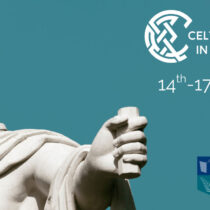A memorial stands confronting oblivion, represent¬ing the present, definite, tangible dimension of death.
The Hesiodic myth of races places bliss in the past. There is a continuous succession in an order of advancing decay. When the course is completed, time starts its reverse flow towards its past. The future is printed in advance in the past, however, the moment, when the two times meet, presents an existential duality: the Word is annihilated and at the same time it is elevated in its supreme perfection.
Ancient Greece is keeping a formidable balance between life and death, the two opponents that are never dispensed. These acrobatics are expressed par excellence in the archaic statues, the nude ephoeboi Kouroi and the dressed Korai: The sculptor-creator raises the figure from the amorphous marble mass -its concrete volume was confronting decay in earlier times, and was thus resisting death-, like order and harmony spring from the primeval nothing. In the archaic period the rhythm of the world has just been revealed to man and becomes the ruling rhythm of art. The contrasts of life are packed in the statue, which in reality represents life and death that at the same time confront and complement each other.
The ephoeboi Kouroi and the youthful Korai live in an amalgam of time, where the nothingness of death signals the dawn and anticipation of life.

